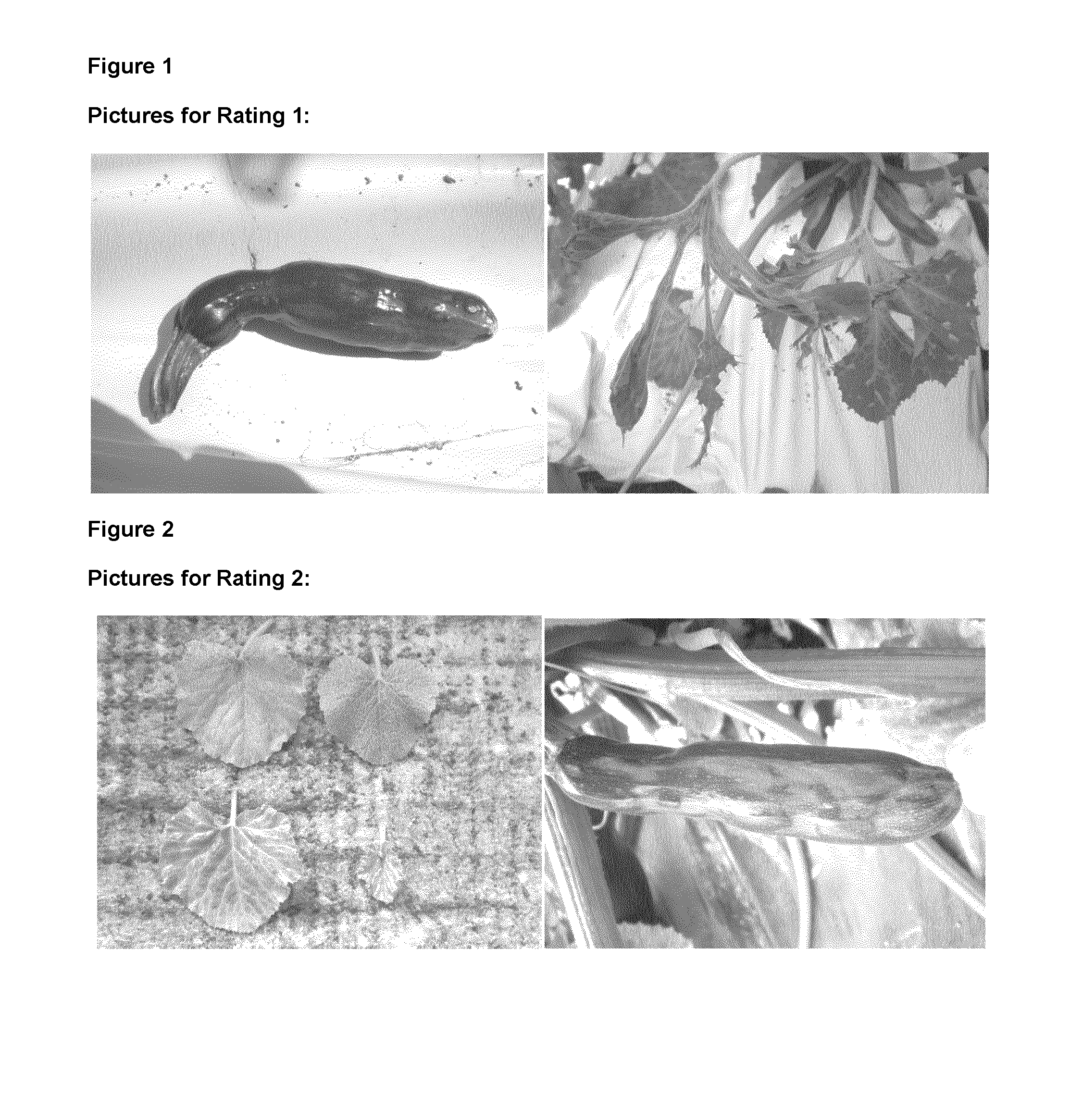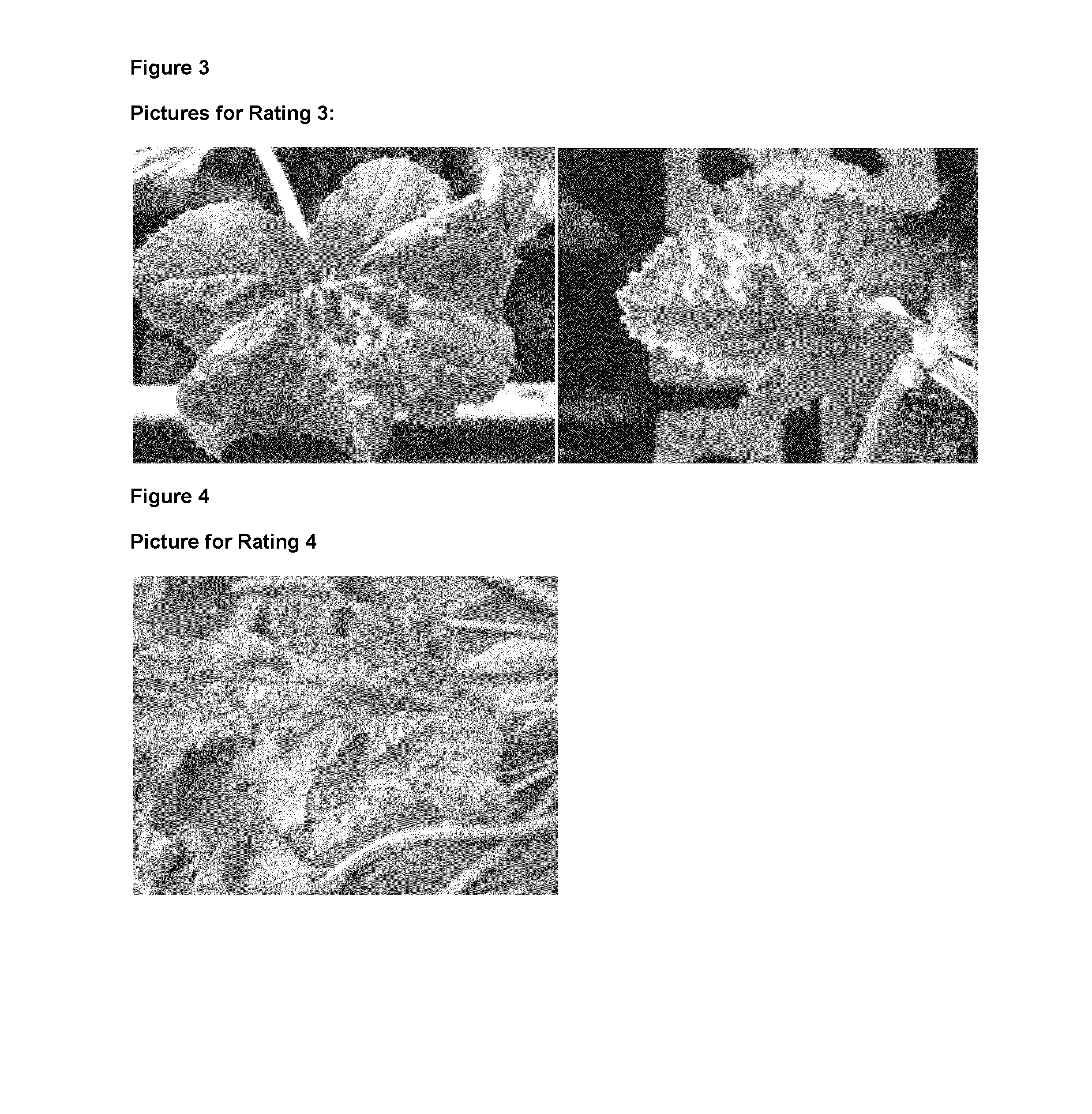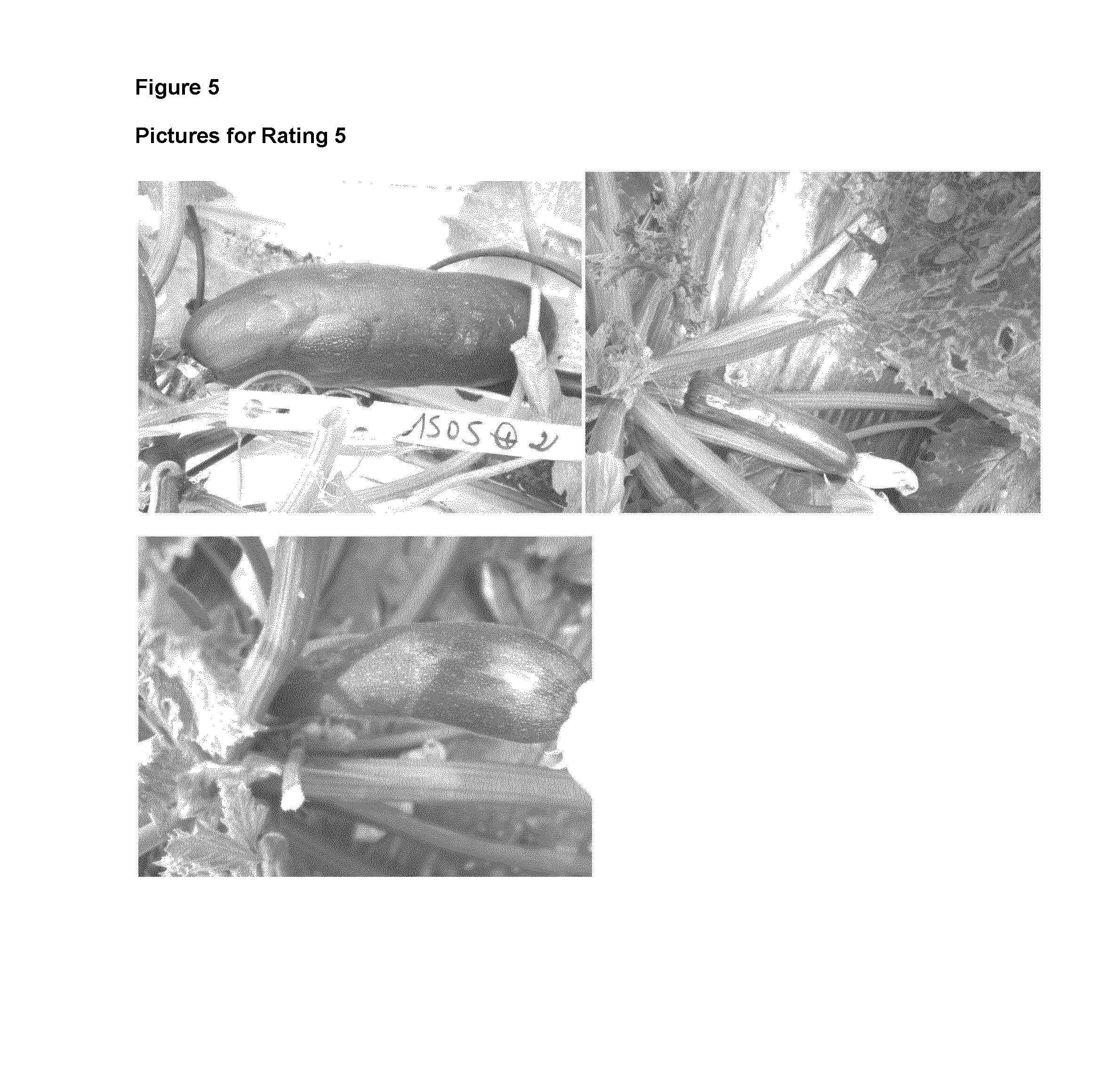Cucurbita plant resistant to potyvirus
- Summary
- Abstract
- Description
- Claims
- Application Information
AI Technical Summary
Benefits of technology
Problems solved by technology
Method used
Image
Examples
example 1
Discovery of Markers Closely Linked to ZYMV and MWMV Resistance Genes in Squash
1. 1 Materials
[0209]For marker discovery purposes, F2 populations segregating for ZYMV-(R line [PP452]×S line [TOSCA]) and MWMV (S line [PP477]×R line [PP477 / (PP415 / (PP419 / (Nigeria / PP432)]) resistance genes from Cucurbita moschata cv Nigeria were generated and sampled; and their corresponding F3 progenies phenotyped for ZYMV and MWMV resistance, respectively. Predictive value of developed assays was assessed by genotyping a diverse verification panel consisting of 96 squash lines and varieties corresponding to different types and market segments.
1. 2 Marker Discovery
[0210]Bulked Segregant Analysis (BSA) using Random Amplified Polymorphism DNA (RAPD) markers (from Operon technologies, Alameda, Calif.; and University of British Columbia, Vancouver, Canada); was performed on different F2 DNA pools with opposed resistant and susceptible phenotypes. Identified candidate markers from BSA screening (RAPD bands s...
example 2
2.1 Use of Protocol
[0234]The following protocol is applicable for all virus (CMV, ZYMV, WMV, MWMV) on squash as well as Cucurbita sp. and cucumber (Cucumis sativus sp.).
2.2 Conservation of the Strain
[0235]Freshly infected leaves (1 g) were weighed. The leaves were then cut finely with a scalpel and put on a paper weighing tray. The weighing tray was put on a Petri dish (55 mm) that contains anhydride chlorure calcium. The box was sealed with parafilm. The name of the strain, the date of the conservation and the weight of fresh leaves prepared were indicated on the box and the number of boxes were recorded. The dishes were kept in the drawer “vegetables” in the fridge.
2.3 Multiplication of Virus from Dehydrated Preparation
[0236]One or more terrines of a susceptible variety were sown. Inoculation was made from dehydrated preparation (see below inoculation of the tests) when the plants are at the “coytyledons” stage. After 1 week to 10 days, the first symptoms woul...
example 3
Guidelines for Potyvirus Pathology Tests on Summer Squash (Cucurbita pepo)
3.1 Rating Guidelines
[0240]The following guidelines were used to determine the extent of ZYMV, WMV, PRSV, MWMV infection on leaves and fruits. Readings, evaluation and ratings were made all along the crop, from 31d leaf stage until adult plant stage (with botanical mature fruits).
[0241]Ratings are done on a scale from 1 to 9 according to the following guidelines, examples of which are shown in FIGS. 1 to 9.
TABLE 1Guidelines for potyvirus testsRatingSymptoms on leavesSymptoms on fruits1Severe deformation, filiformism.Color breaking. Severe bumpings onStunting of leaves and petioles. Plantfruits. Mishaped ovaries. No marketablestops growing.fruits.2Severe deformation, filiformism.Color breaking. Severe bumpings onStunting leaves and petioles.fruits. Mishaped ovaries. No marketablefruits.3Severe mosaic symptoms, sometimesMany symptoms on each fruit, mainlyfiliformism on leaves.discoloured ring shaped zones,someti...
PUM
| Property | Measurement | Unit |
|---|---|---|
| Electrical resistance | aaaaa | aaaaa |
Abstract
Description
Claims
Application Information
 Login to View More
Login to View More - R&D
- Intellectual Property
- Life Sciences
- Materials
- Tech Scout
- Unparalleled Data Quality
- Higher Quality Content
- 60% Fewer Hallucinations
Browse by: Latest US Patents, China's latest patents, Technical Efficacy Thesaurus, Application Domain, Technology Topic, Popular Technical Reports.
© 2025 PatSnap. All rights reserved.Legal|Privacy policy|Modern Slavery Act Transparency Statement|Sitemap|About US| Contact US: help@patsnap.com



